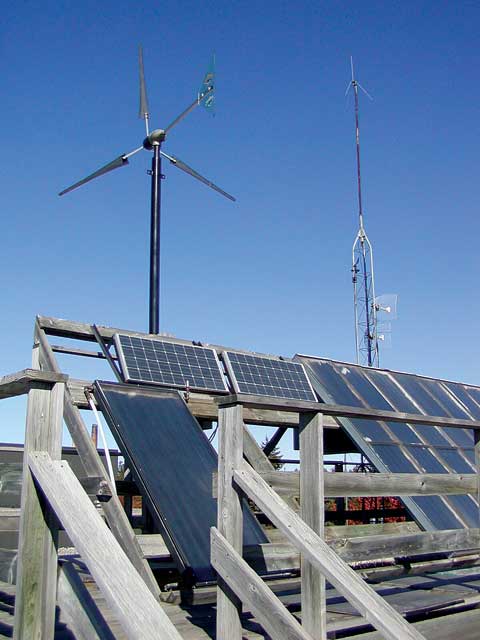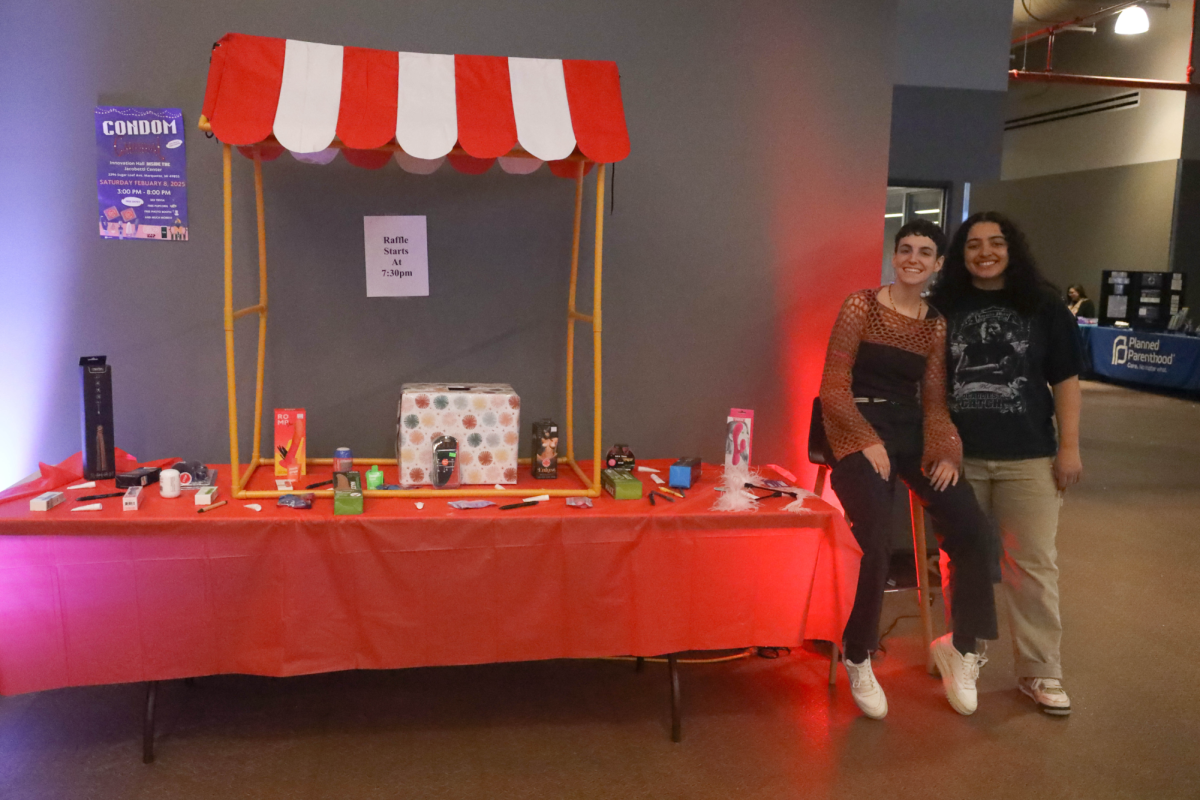NMU Engineering Technology received funding for a renewable laptop program that will use sun and wind power to provide energy to special outlets in the Jacobetti Center commons.
The project is funded through a $1,000 grant from Wisconsin Energy, a $4,970 grant from the NMU Wildcat Innovative Fund and equipment donations, said assistant professor in Engineering Technology, Michael Martin.

Solar panels and two wind turbines located on the roof of the Jacobetti have been used for educational purposes in the past, but several students complained that the energy they generated for their classes wasn’t being used for anything.
“The students that we had in the solar wind classes always said that the power was a waste,” Martin said. “The project itself was student driven due to their observations during class.”
Because of a lack of infrastructure, the energy created was not able to power anything before, but due to the funding and donations, the project will allow NMU Engineering and Technology along with students involved in the solar energy and wind energy classes to take the power and safely generate it to outlets in the commons area. The outlets will become available for use during the early part of the Fall 2011 semester.
Wires are being run to the outlets and other prep work is being done this summer, but the power won’t be available until early on in the fall semester, Martin said. Due to roof replacement, the equipment will be taken down and will delay the project, but will give students a chance to be a bigger part of the project.
“There’s a good chance that the solar power class will be working on this project as part of their lab,” Martin said.
Once the project is complete, there will be special outlets in the commons that students can charge their laptops with. Although the project is called The Renewable Laptop Program, Martin said that anything can be plugged into the outlets.
“It’s regular power in the outlets, so you could plug a vacuum cleaner into it if you wanted to,” Martin said. “We call it ‘The Renewable Laptop Program’ because most students plug their laptops into the outlets in the commons.”
There are several benefits that will come out of this project, Martin said. Currently, students can only learn about how the energy is generated from the sun and wind, but after the project is complete, they will be able to learn about the full process of using that energy to power things like laptops. Martin considers it to be a final link in the education of the technology.
Along with the educational benefits, the university will save money by using sun and wind power instead of from the power plant.
“There won’t be much money saved, but it’ll still make a difference,” Martin said. “When a student plugs in, he’ll be using energy from the sun and wind instead of the power plant,” he said.
Wisconsin Energy Corporation (WE Energy) provides grants to several local projects and community causes, but this was the first local energy related project they’ve helped to fund, said Les Kowalski, plant manager at the Presque Isle Power Plant, which is run by WE Energy.
“We saw it as a great opportunity to promote renewable energy,” Kowalski said.






























